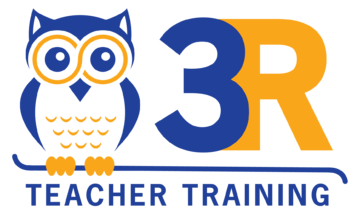As a reading teacher, you’ve seen the magic a good story can spark in a child’s eyes. But what if I told you that the same books that transport kids to magical lands can also teach them math concepts?
Childhood is a tapestry woven with stories – from enchanting fairy tales to tales of adventures in far-off lands. These narratives do more than just entertain; they educate. Believe it or not, many of our favorite childhood tales hide fundamental math concepts waiting to be discovered. I vividly remember the day I was reading “Jack and the Beanstalk” to my son. As Jack traded his cow for a handful of magic beans, my son quizzed, “How many beans does he have?” These innocuous questions make us pause because those stories, often unconsciously, make kids ponder mathematical questions.
Every teacher knows the cognitive benefits of storytelling. Stories help in developing language skills, enhancing imagination, and improving focus. However, their potential in teaching math is an avenue less explored. When children relate to a character or situation, they're more likely to understand and remember a concept. Moreover, emotions play a significant role. The excitement of a story can turn a typically mundane math lesson into a thrilling adventure. Growing up, the rhythmic chant of “One, Two, Buckle My Shoe” had me tapping my feet, utterly oblivious that I was being introduced to number sequencing!
How to Unearth Math Lessons from Stories? The key is active engagement. Ask questions that relate to math concepts while reading. Once, while reading about Johnny Appleseed, I incorporated apples from our garden to explain subtraction. By the end of the lesson, not only did the kids grasp the concept, but they also enjoyed a delicious snack!
There are many benefits of teaching math through stories. The first benefit we strive for as teachers is a holistic approach to learning. It strengthens both literacy and math skills, reinforcing the interconnectedness of knowledge. It adds to student engagement, these familiar characters and exciting plots ensure children are attentive. For those students, as young as they are can have math anxiety, and associating math with a beloved story can diminish the fear and stigma often associated with the subject.
To help reinforce Math through stories offer story-based Math challenges and pose math problems on the stories you just read. We can’t forget about adding math crafts. After reading “The Three Little Pigs,” challenge kids to build houses using straws, sticks, and blocks, and then count them. One of my favorite activities is encouraging kids to write their own math stories. It’s a beautiful amalgamation of creative writing and math.
As educators, our primary goal is to make learning an enriching and enjoyable experience. We can achieve just that by tapping into the math secrets hidden in children's stories. So, the next time you pick up a book, look beyond the plot and delve deep into the hidden lessons.
Here’s your Blueprint to help bring Literature into your math lesson:
- Choose a Relevant Story – Pick tales rich in a mathematical context.
- Beforehand, identify the mathematical concepts. Pinpoint what the story teaches, be it shapes, numbers, or patterns.
- Design Activities Around the Story. If this part is hard for you like it is for me, go to your school’s art teacher and collaborate; they have fabulous ideas! If you introduce geometry and measurement maybe a “Three Little Pigs” house-building project would be effective.
- Encourage students to craft their math stories. Imagine the pride and learning when a student pens a tale where the hero overcomes challenges using math!
Stay tuned for my next article, “Middle Schoolers HATE Math? This Children's Book Trick Might Just Change Their Minds!

